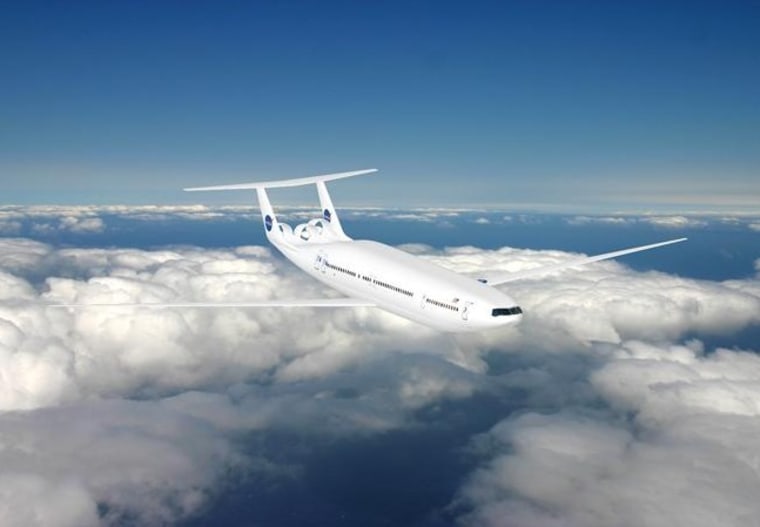Airplanes are notorious polluters. They're as noisy as a rock concert, spew poisons like volatile organic compounds and nitrogen oxides into the air as well as dump millions of pounds of carbon dioxide into the atmosphere every year.
In a piece from USA Today, Gary Stoller reports that “On a New York-to-Denver flight, a commercial jet would generate 840 to 1,660 pounds of carbon dioxide per passenger. That's about what an SUV generates in a month.”
By 2050, emissions from planes are expected to become one of the largest contributors to global warming, says the Royal Commission on Environmental Pollution, an independent group of scientists in England.
That's why researchers at MIT are designing a completely new type of airplane for NASA that will enable greener airplanes to take flight before 2050.
The 180-passenger D “double bubble” series was designed for domestic flights, meant to replace the Boeing 737 class aircraft, the most popular jetliner in the world right now. The design is called a “double bubble” because it uses two partial cylinders placed side by side. Those two cylinders create a wider structure that looks like two soap bubbles joined together.
In today's commercial airplanes, air flows directly into the engines located on the plane's wings. That undisturbed, high-speed air flow drags on the plane, and requires more fuel to overcome the design inefficiency.
MIT's design changes all that. By moving the engines to the plane's tail, they take in slower moving air present in the wake of the fuselage. Less drag means less fuel is needed to get the plane the same distance.
NASA awarded contracts to MIT and several companies to develop concepts and designs for the next generation of airplanes.
MIT researchers had four goals for the plane they designed:
- It had to be much quieter.
- Burn 70 percent less fuel.
- Emit 75 percent less nitrogen oxides, a noxious gas that many researchers are trying to remove from various mechanical processes.
- Take off from shorter runways.
Burning less fuel can help airline passengers' wallets as well as the environment. The cost of fuel makes up 35 percent of the price of an average plane ticket, according to the Air Transport Association.
If fuel costs are cut by 70 percent, as MIT's design is supposed to, that would decrease the price of an average plane ticket by almost 25 percent. That's not too shabby when the average ticket price these days is about $300.
The environmental implications of saving energy are as just as clear: the fewer emissions that planes spout into the atmosphere, the healthier our planet.
But for now, the MIT researchers and airline passengers alike have some waiting ahead of them. MIT still needs to hear back from NASA on whether its design has advanced to the next phase of the space agency's program.
As for airline passengers, don't wait up. We still have a couple decades to wait before any of these planes make it onto the runway. NASA's goal is to make sure the planes that MIT has designed can take off by 2035.
